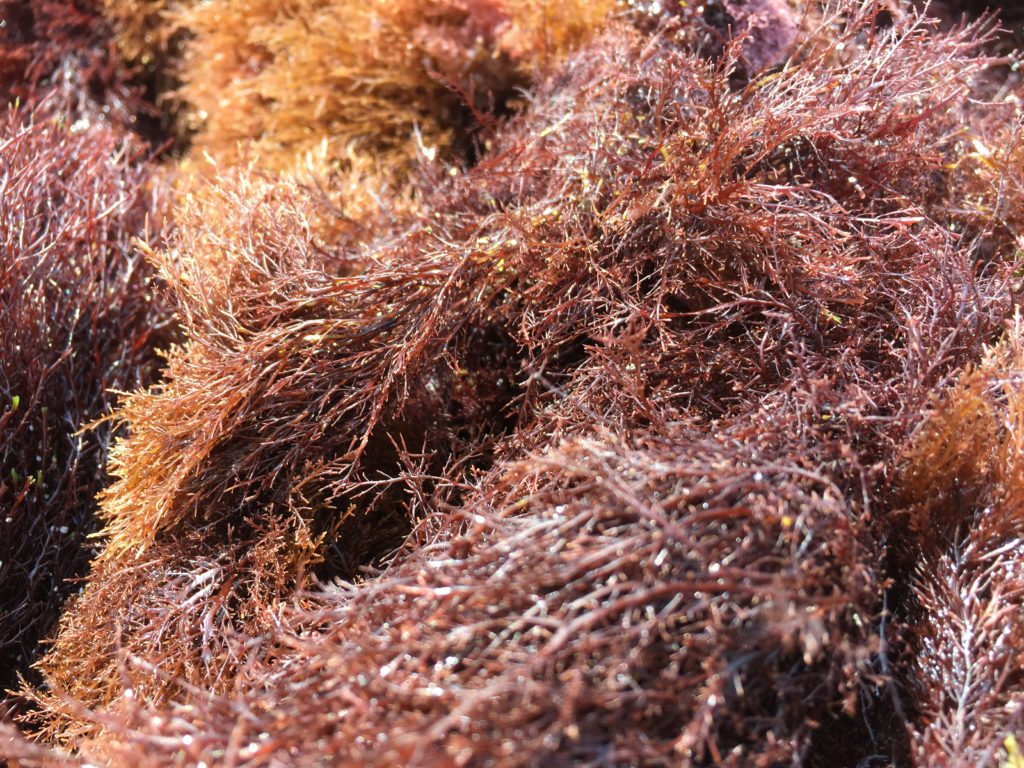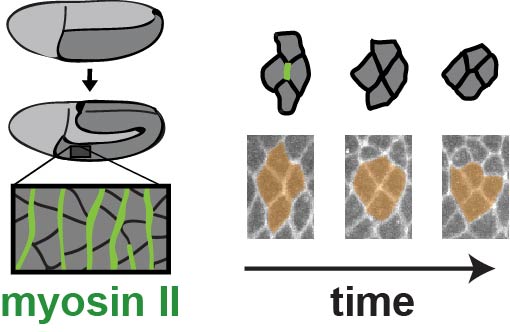A microRNA inhibitor identified by researchers at the FAPESP-supported Human Genome and Stem Cell Research Center reduced the sizes of aggressive tumors and improved survival in mice
Tag: genes
Layman receives top reproductive medicine researcher award
AUGUSTA, Ga. (Nov. 7, 2019) – Dr. Lawrence C. Layman, chief of the Section of Reproductive Endocrinology, Infertility and Genetics in the Department of Obstetrics and Gynecology at the Medical College of Georgia at Augusta University, is the 2019 recipient…
Stanford researchers lay out first genetic history of Rome
Scholars have been studying Rome for hundreds of years, but it still holds some secrets – for instance, relatively little is known about the ancestral origins of the city’s denizens. Now, an international team led by researchers from Stanford University,…
Researchers discover how cells know their future and forget their past
Stem cells all share the potential of developing into any specific cell in the body. Many researchers are therefore trying to answer the fundamental questions of what determines the cells’ developmental fate as well as when and why the cells…
Sugar-coating proteins can help understand brain disease
A University of Dundee discovery has the potential to help scientists better understand neurological diseases such as Alzheimer’s and Parkinson’s
World’s most comprehensive study of a deadly heart condition yields 1st results
Registry will help doctors predict patients’ risk, determine best treatments
A mechanism capable of preserving muscle mass
A promising avenue for the prevention of sarcopenia
A new CRISPR-Cas9 protein to increase precision of gene editing
A team of researchers from City University of Hong Kong (CityU) and Karolinska Institutet has recently developed a new protein that can help increase the targeting accuracy in the genome editing process. It is believed that it would be useful…
Dr. Yamamoto receives the Karl Landsteiner Memorial Award and Lectureship
Dr. Fumiichiro Yamamoto receives the prestigious Karl Landsteiner Memorial Award and Lectureship for his work on blood group genes
Revealed a mechanism of beta-cells involved in the development of type-1 diabetes
Researchers reveal how pancreatic ß-cells respond to an inflammatory environment and its implication in developing Type 1 diabetes
New genetic analysis improves diagnosis of intellectual disability
Whole-genome sequencing can be used to diagnose intellectual disability more accurately than other methods of genetic analysis, researchers at Karolinska Institutet report in the scientific journal Genome Medicine . Whole-genome sequencing using analytical tools developed by the researchers will now…
A mechanism capable of preserving muscle mass
A promising avenue for the prevention of sarcopenia
A new CRISPR-Cas9 protein to increase precision of gene editing
A team of researchers from City University of Hong Kong (CityU) and Karolinska Institutet has recently developed a new protein that can help increase the targeting accuracy in the genome editing process. It is believed that it would be useful…
Dr. Yamamoto receives the Karl Landsteiner Memorial Award and Lectureship
Dr. Fumiichiro Yamamoto receives the prestigious Karl Landsteiner Memorial Award and Lectureship for his work on blood group genes
Revealed a mechanism of beta-cells involved in the development of type-1 diabetes
Researchers reveal how pancreatic ß-cells respond to an inflammatory environment and its implication in developing Type 1 diabetes
New genetic analysis improves diagnosis of intellectual disability
Whole-genome sequencing can be used to diagnose intellectual disability more accurately than other methods of genetic analysis, researchers at Karolinska Institutet report in the scientific journal Genome Medicine . Whole-genome sequencing using analytical tools developed by the researchers will now…
New mechanism for development of type 1 diabetes implicates more active role for ß cells
-Exposure of pancreatic islets cells to inflammatory cytokines results in the activation of non-coding DNA regions that act as “switches” to trigger gene expression and protein translation. This study has mapped these non-coding regions in islet cells. -Genetic variants that…
Achilles heel of tumor cells
In 90 percent of all cases of colon cancer, the tumour cells have one thing in common: the APC gene is mutated. Research groups at Julius-Maximilians-Universität (JMU) Würzburg in Bavaria, Germany, were looking for targets in these cells that could…
Transient wave of hematopoietic stem cell production in late fetuses and young adults
Hematopoietic stem cells (HSCs) are responsible for the constant replenishment of all blood cells throughout life. One of the major challenges in regenerative medicine is to produce tailor-made HSCs to replace the defective ones in patients suffering from blood related…
Transient wave of hematopoietic stem cell production in late fetuses and young adults
Hematopoietic stem cells (HSCs) are responsible for the constant replenishment of all blood cells throughout life. One of the major challenges in regenerative medicine is to produce tailor-made HSCs to replace the defective ones in patients suffering from blood related…
CNIO researchers describe a molecular strategy that helps prevent tumour formation in mice
The body’s process for manufacturing fatty acids is regulated by the enzyme FASN. In normal cells, this is not a very active process – except occasionally in the liver and adipose tissue – since most of the fatty acids we…
Zebrafish study reveals developmental mechanisms of eye movement
Fralin Biomedical Research Institute leads multi-university team in neuroscience study
Synthetic phages with programmable specificity
Bacteriophages (“phages” for short) are viruses that infect bacteria. Phages are highly host-?specific and will typically only infect and kill an individual species or even subspecies of bacteria. Compared to conventional antibiotics, phages do not indiscriminately kill bacteria. Therefore when…
Gene-OFF switches tool up synthetic biology
Programmable repressor elements expand the toolbox of synthetic biologists, enabling more sophisticated and accurate diagnostic, environmental, and biofabrication approaches
Transient wave of hematopoietic stem cell production in late fetuses and young adults
Hematopoietic stem cells (HSCs) are responsible for the constant replenishment of all blood cells throughout life. One of the major challenges in regenerative medicine is to produce tailor-made HSCs to replace the defective ones in patients suffering from blood related…
Cervical pre-cancer can be detected in self-collected urine or vaginal samples
Glasgow, UK: Researchers have developed a non-invasive test to detect cervical pre-cancer by analysing urine and vaginal samples collected by the women themselves. In a presentation at the 2019 NCRI Cancer Conference today (Monday), Dr Belinda Nedjai said that self-sampling…
Cervical pre-cancer can be detected in self-collected urine or vaginal samples
Glasgow, UK: Researchers have developed a non-invasive test to detect cervical pre-cancer by analysing urine and vaginal samples collected by the women themselves. In a presentation at the 2019 NCRI Cancer Conference today (Monday), Dr Belinda Nedjai said that self-sampling…
Unique case of disease resistance reveals possible Alzheimer’s treatment
NIH-funded study identifies gene variant as potential drug target
Unique case of disease resistance reveals possible Alzheimer’s treatment
NIH-funded study identifies gene variant as potential drug target
Regeneration mechanism discovered in mice could provide target for drugs to combat chronic liver disease
Mechanism provides potential target for drugs to combat chronic liver disease
Cervical pre-cancer can be detected in self-collected urine or vaginal samples
Glasgow, UK: Researchers have developed a non-invasive test to detect cervical pre-cancer by analysing urine and vaginal samples collected by the women themselves. In a presentation at the 2019 NCRI Cancer Conference today (Monday), Dr Belinda Nedjai said that self-sampling…
USC stem cell scientists reveal key differences in how kidneys form in men and women
USC researchers have completed a detailed deconstruction of the kidney, revealing for the first time an intimate portrait of gender differences and more in the organ. The findings could benefit 37 million Americans suffering from kidney disease by helping to…
Unique case of disease resistance reveals possible Alzheimer’s treatment
NIH-funded study identifies gene variant as potential drug target
Zebrafish study reveals developmental mechanisms of eye movement
Fralin Biomedical Research Institute leads multi-university team in neuroscience study
Regeneration mechanism discovered in mice could provide target for drugs to combat chronic liver disease
Mechanism provides potential target for drugs to combat chronic liver disease
Gene-OFF switches tool up synthetic biology
Programmable repressor elements expand the toolbox of synthetic biologists, enabling more sophisticated and accurate diagnostic, environmental, and biofabrication approaches
USC stem cell scientists reveal key differences in how kidneys form in men and women
USC researchers have completed a detailed deconstruction of the kidney, revealing for the first time an intimate portrait of gender differences and more in the organ. The findings could benefit 37 million Americans suffering from kidney disease by helping to…
Regeneration mechanism discovered in mice could provide target for drugs to combat chronic liver disease
Mechanism provides potential target for drugs to combat chronic liver disease
CNIO researchers describe a molecular strategy that helps prevent tumour formation in mice
The body’s process for manufacturing fatty acids is regulated by the enzyme FASN. In normal cells, this is not a very active process – except occasionally in the liver and adipose tissue – since most of the fatty acids we…
Zebrafish study reveals developmental mechanisms of eye movement
Fralin Biomedical Research Institute leads multi-university team in neuroscience study
Synthetic phages with programmable specificity
Bacteriophages (“phages” for short) are viruses that infect bacteria. Phages are highly host-?specific and will typically only infect and kill an individual species or even subspecies of bacteria. Compared to conventional antibiotics, phages do not indiscriminately kill bacteria. Therefore when…
CNIO researchers describe a molecular strategy that helps prevent tumour formation in mice
The body’s process for manufacturing fatty acids is regulated by the enzyme FASN. In normal cells, this is not a very active process – except occasionally in the liver and adipose tissue – since most of the fatty acids we…
Gene-OFF switches tool up synthetic biology
Programmable repressor elements expand the toolbox of synthetic biologists, enabling more sophisticated and accurate diagnostic, environmental, and biofabrication approaches
Synthetic phages with programmable specificity
Bacteriophages (“phages” for short) are viruses that infect bacteria. Phages are highly host-?specific and will typically only infect and kill an individual species or even subspecies of bacteria. Compared to conventional antibiotics, phages do not indiscriminately kill bacteria. Therefore when…
USC stem cell scientists reveal key differences in how kidneys form in men and women
USC researchers have completed a detailed deconstruction of the kidney, revealing for the first time an intimate portrait of gender differences and more in the organ. The findings could benefit 37 million Americans suffering from kidney disease by helping to…
Researchers identify certain gut bacteria that may be involved in causing bowel cancer
Glasgow, UK: People who have a certain type of bacteria in their guts may be at greater risk of developing bowel cancer. In the first study to use a technique called Mendelian randomisation to investigate the causal role played by…

Red Algae Thrive Despite Ancestor’s Massive Loss of Genes
You’d think that losing 25 percent of your genes would be a big problem for survival. But not for red algae, including the seaweed used to wrap sushi. An ancestor of red algae lost about a quarter of its genes roughly one billion years ago, but the algae still became dominant in near-shore coastal areas around the world, according to Rutgers University–New Brunswick Professor Debashish Bhattacharya, who co-authored a study in the journal Nature Communications.

New Clues as to Why Mutations in the MYH9 Gene Cause a Broad Spectrum of Disorders in Humans
Researchers have used the Drosophila embryo to model human disease mutations that affect myosin motor activity. Through in vivo imaging and biophysical analysis, they demonstrated that engineering human MYH9-related disease mutations into Drosophila myosin II produces motors with altered organization and dynamics that fail to drive rapid cell movements, resulting in defects in epithelial morphogenesis.
Zebrafish discovery throws new light on human hearing disorders
Scientists gain understanding of mechanisms that determine growth patterns of tiny hairy cells within the ear
Researchers discover the ‘KARAPPO’ gene and illuminate vegetative reproduction
Applications expected in agricultural and horticultural fields